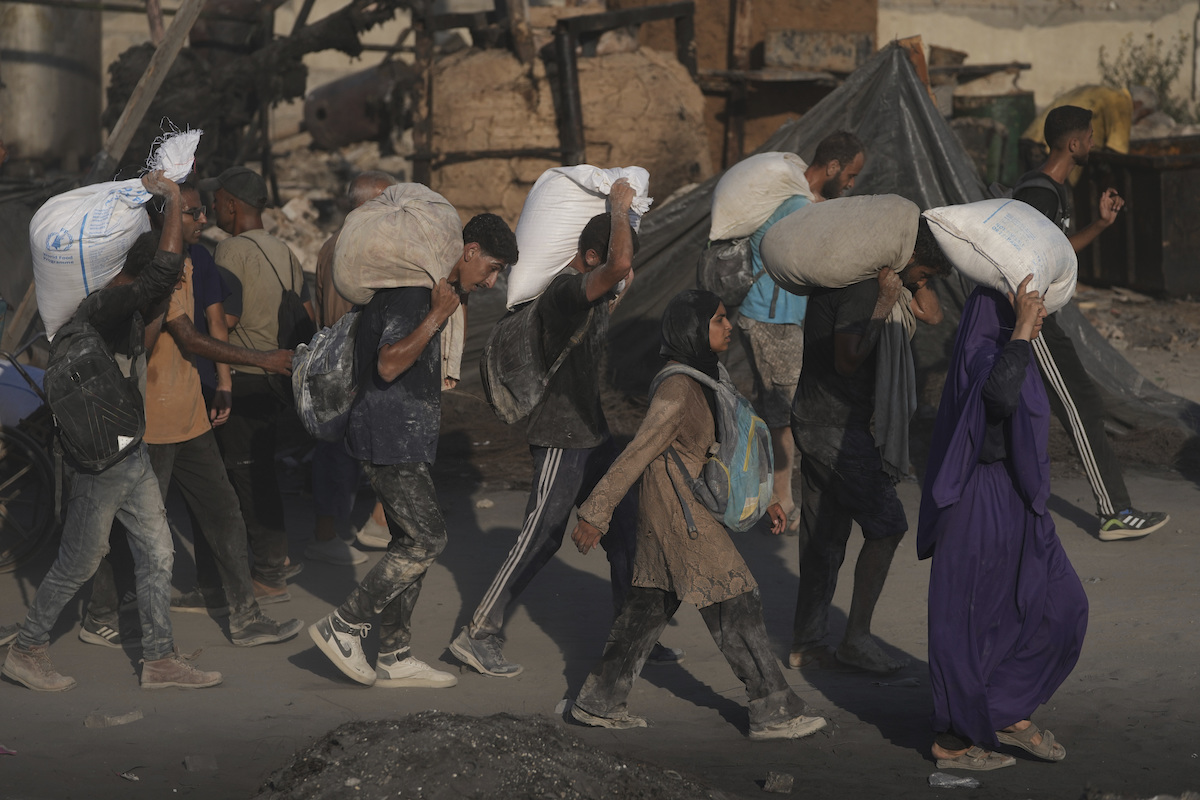NBC News reported July 28 that White House officials told the network Trump had “previously approved $60 million for aid to Gaza” that had gotten “little public notice.” The story did not provide details.
Neither the White House nor the State Department responded to PolitiFact’s questions about what agency or group received $60 million from the U.S., and whether any of the aid reached Gazans. PolitiFact contacted multiple humanitarian aid groups and they said they had no knowledge of any recent U.S. aid. The $60 million isn’t listed on USASpending.gov, a government website that tracks federal spending.
Logistical and bureaucratic challenges, including Israeli blockades, along with dangers inside the Gaza strip, make it difficult to ensure resources are delivered.
State Department fast-tracked aid approval for Gaza Humanitarian Foundation
In late June, the U.S. State Department approved the $30 million U.S. Agency for International Development grant for the Gaza Humanitarian Foundation, a U.S.- and Israeli-backed initiative that launched in May after Israel suspended aid in March. (USAID was disbanded as of July 1 but merged its remaining operations with the State Department.)
The Gaza Humanitarian Foundation uses private U.S. security and logistics groups to transport and distribute food and other supplies at “secure distribution sites” in Gaza. But lawmakers, U.N. officials and humanitarian groups have criticized the operation, citing the small number of food distribution sites and the killing of Palestinians during aid delivery.
A coalition of 21 Democratic senators sent a July 27 letter to U.S. Secretary of State Marco Rubio asking whether oversight had been circumvented for the Gaza Humanitarian Foundation.
The senators cited a Reuters report that said the Trump administration authorized the $30 million in aid under a “priority directive,” which means the money avoided auditing that’s typical for groups receiving USAID grants for the first time. The Gaza Humanitarian Foundation has not publicly disclosed its finances and has been exempted from additional vetting, Reuters reported.
PolitiFact contacted the Gaza Humanitarian Foundation to ask whether it had received U.S. funding in recent weeks, but received no reply.

Palestinians carry sacks of flour unloaded from a humanitarian aid convoy that reached Gaza City from the northern Gaza Strip on July 26. (AP)
Getting aid into Gaza involves bureaucratic, safety and logistical obstacles
As reports about starvation and extreme food shortages drew headlines, Trump pledged to open “food centers” in Gaza.
“It’s crazy what’s going on over there,” Trump told reporters in Scotland on July 28. “We can save a lot of people. I mean some of those kids … that’s real starvation stuff. I see it, and you can’t fake that. So, we’re going to be even more involved.”
Officials say delivering aid to Gaza is difficult because of bureaucratic, safety and logistical obstacles. Israel has restricted U.N. aid missions because it says Hamas intercepts and steals aid.
An internal USAID analysis, first reported by Reuters, examined 156 incidents of reported theft or loss of USAID-funded supplies. It found no indication of systemic loss because of Hamas interference or theft and said less than 1% of the aid was affected by theft, diversion or fraud.
The State Department disputed Reuters’ review, saying there are videos of Hamas looting aid sites but provided no evidence of such videos. Israel says it has let in approximately 4,500 aid trucks since it lifted a total blockade in May, or about 70 truckloads a day. The U.N. says several hundred trucks a day are needed to feed the more than 2 million people who live in Gaza.
RELATED: Gaza children face dire starvation risk, but one UN leader’s mistaken timeline caused confusion
Our ruling
Trump said the U.S. gave $60 million in aid to Gaza two weeks ago.
Federal officials did not respond to questions about which agency or group received the funding and when.
The State Department previously said the U.S. approved a $30 million grant for aid in late June; but it said that as of July 26, the funds hadn’t been distributed. Some news reports said additional $30 million aid grants can be approved monthly, but we found no evidence, such as news or government reports, that additional money has been allocated or sent to the region.
The statement contains The statement is partially accurate but leaves out important details.
We rate it Half True.
